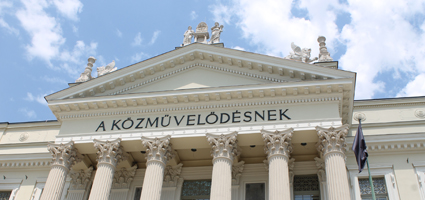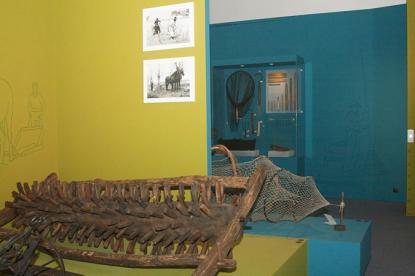2024. November 22. Friday
Ferenc Móra Museum - Museum of Csongrád County Government - Szeged
 |
Address: 6720, Szeged Roosevelt tér 1-3.
Phone number: (62) 549-040
E-mail: info@mfm.u-szeged.hu
Opening hours: Mon-Sun 10-18
|
Museum tickets, service costs:
|
Ticket for adults
|
1590 HUF
|
|
|
Ticket for adults
(lookout tower)
|
700 HUF
|
|
|
Ticket for students
|
990 HUF
|
|
|
Ticket for students
(lookout tower)
|
500 HUF
|
|
|
Ticket for pensioners
(lookout tower)
|
500 HUF
|
|
|
Individual ticket for pensioners
|
990 HUF
|
|
|
Ticket for families
(max. 2 adults + 2 children)
|
4490 HUF
|
/ family
|
|
Ticket for families
(lookout tower, max. 2 adults + 2 children)
|
2000 HUF
|
/ family
|
|
Combined ticket for adults
(all exhibition places in Szeged)
|
2490 HUF
|
|
|
Combined ticket for students
(all exhibition places in Szeged)
|
1490 HUF
|
|
|
Combined ticket for pensioners
(all exhibition places in Szeged)
|
1490 HUF
|
|
|
Combined ticket for families
(all exhibition places in Szeged, max. 2 adults + 2 children)
|
6990 HUF
|
/ family
|
|
Guide
|
7500 HUF
|
/ place
|
|
Guide
|
10000 HUF
|
/ place
|
The spoken language with the letter 'ö', the slipper maker craft, the sun ornamented façade of peasant houses and the saint’s day are all symbols of the town of Szeged. The permanent exhibition presents some of the traditions that are still alive.

Over four tones of material made of iron, various metal and wood were moved around, and 160 l of paint was used during the setting up work of the new ethnographic exhibition at the Móra Ferenc Museum. The smallest object on display is a 3-cm bent nail, once used by shipwright. The largest item is a 130-kg cylinder with which hey was turned around in the past to fasten drift of sand. Over forty archive photos and nearly two-hundred old objects demonstrate the life of people of Szeged in the past. The curator of the exhibition is Ildikó Bárkányi.
The main theme is 'being of Szeged', the town and the greater region that belongs to it. The finances exceeded forty million forints. The permanent exhibition for which the expenses were financed by the Local Government of Csongrád County, the Ministry of Culture and Cult and the EU, is to be on for years. Highlighted topics are activities related to the River of Tisza, agriculture on sand and paprika growing, as well as small trades like slipper and knife makers.
Eight touch screens help the visitors in finding direction. The texts are written by locally designed letters. The texts written in 'Tisza' letters inform the visitors that the penknife from Szeged was popular across the country, especially the so-called fish penknife. Dried paprika was grinded in wooden mortar. Slippers were Szeged also very popular all around the country.
There are also palpable objects that the visitors can even hold if they feel like it and stealth can also be tried on.

Over four tones of material made of iron, various metal and wood were moved around, and 160 l of paint was used during the setting up work of the new ethnographic exhibition at the Móra Ferenc Museum. The smallest object on display is a 3-cm bent nail, once used by shipwright. The largest item is a 130-kg cylinder with which hey was turned around in the past to fasten drift of sand. Over forty archive photos and nearly two-hundred old objects demonstrate the life of people of Szeged in the past. The curator of the exhibition is Ildikó Bárkányi.
The main theme is 'being of Szeged', the town and the greater region that belongs to it. The finances exceeded forty million forints. The permanent exhibition for which the expenses were financed by the Local Government of Csongrád County, the Ministry of Culture and Cult and the EU, is to be on for years. Highlighted topics are activities related to the River of Tisza, agriculture on sand and paprika growing, as well as small trades like slipper and knife makers.
Eight touch screens help the visitors in finding direction. The texts are written by locally designed letters. The texts written in 'Tisza' letters inform the visitors that the penknife from Szeged was popular across the country, especially the so-called fish penknife. Dried paprika was grinded in wooden mortar. Slippers were Szeged also very popular all around the country.
There are also palpable objects that the visitors can even hold if they feel like it and stealth can also be tried on.
